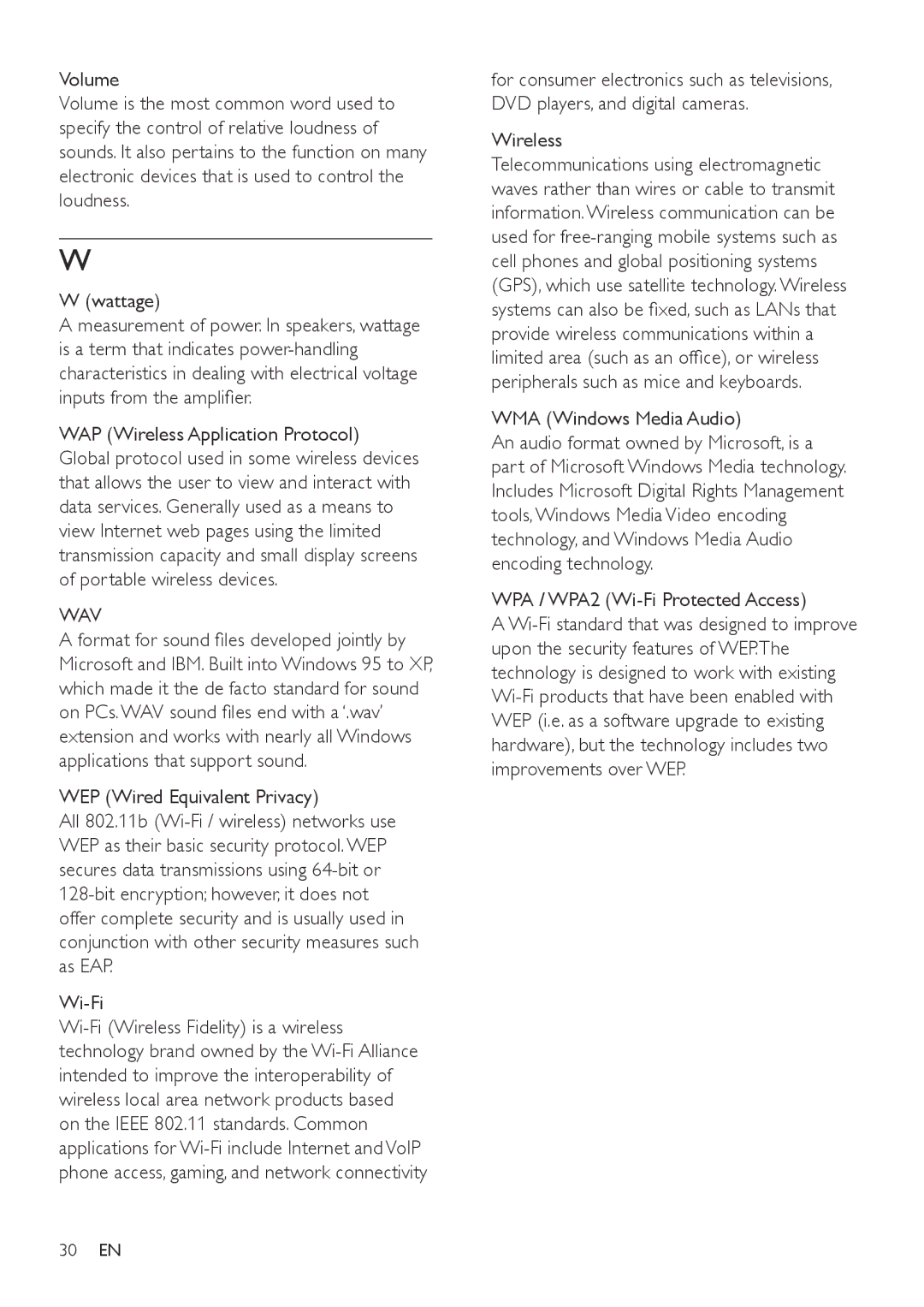NP1100/12 specifications
The Philips NP1100/12 is a compact and stylish networked audio player that caters to the needs of music enthusiasts who value both functionality and design. This innovative device stands out due to its ability to connect to various audio sources seamlessly, making it a versatile addition to any home audio setup.One of the primary features of the NP1100/12 is its compatibility with multiple streaming services. It supports Wi-Fi connectivity, allowing users to stream music from popular platforms like Spotify, Deezer, and others directly through the device. In addition to streaming, it also supports a wide range of file formats, including MP3, WMA, and WAV, ensuring that users can enjoy high-quality audio from their personal music collections.
The NP1100/12 is designed with user convenience in mind. It features a simple, intuitive interface that allows for easy navigation and control. The device can be managed via the user-friendly Philips Streamium app, which is compatible with both iOS and Android devices. This app not only simplifies playback controls but also allows users to browse through their music library and create playlists effortlessly.
Another significant characteristic of the NP1100/12 is its integration with the home network. With built-in DLNA support, users can access music stored on their PCs or network-attached storage devices, creating a centralized audio experience. This functionality is vital for those with extensive music libraries who prefer to access their tunes without the hassle of transferring files to individual devices.
In terms of sound quality, Philips has equipped the NP1100/12 with high-performance audio processing technology. The device is engineered to deliver clear and powerful sound, producing high-fidelity audio that can fill any room. The sleek and modern design also makes it an attractive addition to any decor, blending aesthetic appeal with superb audio performance.
Furthermore, the NP1100/12 includes an auxiliary input, enabling users to connect other audio devices such as smartphones and tablets. This feature adds to the versatility of the device, allowing for a broader range of listening options.
In summary, the Philips NP1100/12 is a well-designed networked audio player that combines style, functionality, and superior sound quality. Its compatibility with streaming services, intuitive app integration, and high-fidelity audio processing make it an ideal choice for music lovers seeking to enhance their listening experience at home.
